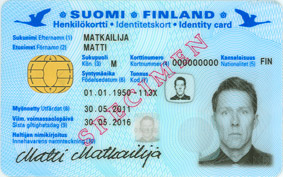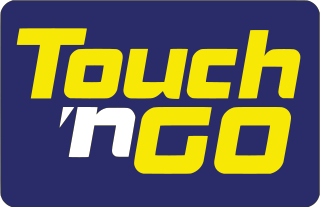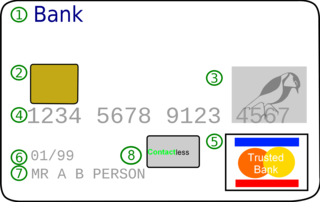External links
- VisaCash.org a website dedicated to saving the history of the Visa Cash card program.
Visa Cash is a smart card electronic cash system, implemented as a stored-value card owned by Visa.
Trialled in various locations worldwide (including Leeds, UK in 1997), the system works via a 'chip' embedded in a bank card, and looks similar to the so-called 'Chip and PIN' cards issued, among other countries, in Europe. Another early trial was performed in conjunction with the World Ski Championship in Trondheim, Norway in late February 1997. Several different cards were issued, with loaded face values of 200, 250, 400 and 600 NOK. The cards expired Aug 97.
The card is 'loaded' with cash via specialized ATMs, and the cash can later be 'spent' by inserting the card into the retailer's card-reader and pressing a button to confirm the amount. Neither PIN entry nor a signature is required, which makes for a speedy transaction for the card's owner.
Other competing cashless payment systems for micro-payments (small amounts) include Mondex.
A more successful smart card electronic cash system is the Octopus card system in Hong Kong.
A debit card is a payment card that can be used in place of cash to make purchases. It is similar to a credit card, but unlike a credit card, the money for the purchase must be in the cardholder's bank account at the time of a purchase and is immediately transferred directly from that account to the merchant's account to pay for the purchase.

Electronic funds transfer at point of sale is an electronic payment system involving electronic funds transfers based on the use of payment cards, such as debit or credit cards, at payment terminals located at points of sale. EFTPOS technology was developed during the 1980s. In Australia and New Zealand, it is also the brand name of a specific system used for such payments; these systems are mainly country-specific and do not interconnect. In Singapore, it is known as NETS.

A smart card, chip card, or integrated circuit card is a physical electronic authorization device, used to control access to a resource. It is typically a plastic credit card-sized card with an embedded integrated circuit (IC) chip. Many smart cards include a pattern of metal contacts to electrically connect to the internal chip. Others are contactless, and some are both. Smart cards can provide personal identification, authentication, data storage, and application processing. Applications include identification, financial, mobile phones (SIM), public transit, computer security, schools, and healthcare. Smart cards may provide strong security authentication for single sign-on (SSO) within organizations. Numerous nations have deployed smart cards throughout their populations.

The Octopus card is a reusable contactless stored value smart card for making electronic payments in online or offline systems in Hong Kong. Launched in September 1997 to collect fares for the territory's mass transit system, the Octopus card system is the second contactless smart card system in the world, after the Korean Upass, and has since grown into a widely used payment system for all public transport in Hong Kong, leading to the development of Navigo card in Paris, Oyster Card in London, Opal Card in New South Wales, NETS FlashPay and EZ-Link in Singapore and many other similar systems around the world.

A stored-value card (SVC) is a payment card with a monetary value stored on the card itself, not in an external account maintained by a financial institution. This means no network access is required by the payment collection terminals as funds can be withdrawn and deposited straight from the card. Like cash, payment cards can be used anonymously as the person holding the card can use the funds. They are an electronic development of token coins and are typically used in low-value payment systems or where network access is difficult or expensive to implement, such as parking machines, public transport systems, closed payment systems in locations such as ships or within companies.
Electronic cash was, until 2007, the debit card system of the German Banking Industry Committee, the association that represents the top German financial interest groups. Usually paired with a transaction account or current account, cards with an Electronic Cash logo were only handed out by proper credit institutions. An electronic card payment was generally made by the card owner entering their PIN at a so-called EFT-POS-terminal (Electronic-Funds-Transfer-Terminal). The name "EC" originally comes from the unified European checking system Eurocheque. Comparable debit card systems are Maestro and Visa Electron. Banks and credit institutions who issued these cards often paired EC debit cards with Maestro functionality. These combined cards, recognizable by an additional Maestro logo, were referred to as "EC/Maestro cards".

EMV is a payment method based upon a technical standard for smart payment cards and for payment terminals and automated teller machines which can accept them. EMV originally stood for "Europay, Mastercard, and Visa", the three companies that created the standard.

The Touch 'n Go smart card is used by Malaysian toll expressway and highway operators as the sole electronic payment system (EPS). The credit card-sized smart card is made of plastic with Philips' MIFARE Classic microchip technology embedded in it.
Dexit was a publicly traded company in Toronto, Ontario, Canada. It offered a rechargeable, contactless, stored-value smart key tag used for electronic payment in on-line or off-line systems locally in 2003, until it stopped operating in 2006. Dexit was rebranded in 2007 and its name changed to Hosted Data Transaction Solutions Inc (HDX) and is currently now known as Posera.

Mastercard Mondex is a smart card electronic cash system, implemented as a stored-value card owned by Mastercard.

Payment cards are part of a payment system issued by financial institutions, such as a bank, to a customer that enables its owner to access the funds in the customer's designated bank accounts, or through a credit account and make payments by electronic acc transfer and access automated teller machines (ATMs). Such cards are known by a variety of names including bank cards, ATM cards, client cards, key cards or cash cards.

Chipknip was an electronic cash system used in the Netherlands until 1 January 2015. All ATM cards issued by Dutch banks had smart cards that could be loaded with value via Chipknip loading stations next to ATMs. For people who did not have Dutch bank accounts, pre-paid Chipknip cards could be purchased at various locations in the Netherlands. Chipknip was used for payments at parking machines, office canteens, and for other small retail transactions. No network access was required by the payment collection terminal. The system was complementary to the online electronic point-of-sale payment system known in the Netherlands as PIN which transfers money between bank accounts in real-time. The maximum value of Chipknip storage and transactions was quite limited but adequate for small retail transactions.

A contactless smart card is a contactless credential whose dimensions are credit-card size. Its embedded integrated circuits can store data and communicate with a terminal via NFC. Commonplace uses include transit tickets, bank cards and passports.

Network for Electronic Transfers or more commonly known as NETS; is a Singaporean electronic payment service provider founded in 1985 by a consortium of local banks to establish the debit network and drive the adoption of electronic payments in Singapore. It is owned by DBS Bank, OCBC Bank and United Overseas Bank (UOB).

Contactless payment systems are credit cards and debit cards, key fobs, smart cards, or other devices, including smartphones and other mobile devices, that use radio-frequency identification (RFID) or near field communication for making secure payments. The embedded integrated circuit chip and antenna enable consumers to wave their card, fob, or handheld device over a reader at the point of sale terminal. Contactless payments are made in close physical proximity, unlike other types of mobile payments which use broad-area cellular or WiFi networks and do not involve close physical proximity.
The payment card industry (PCI) denotes the debit, credit, prepaid, e-purse, ATM, and POS cards and associated businesses.

A credit card is a payment card issued to users (cardholders) to enable the cardholder to pay a merchant for goods and services based on the cardholder's accrued debt. The card issuer creates a revolving account and grants a line of credit to the cardholder, from which the cardholder can borrow money for payment to a merchant or as a cash advance. There are two credit card groups: consumer credit cards and business credit cards. Most cards are plastic, but some are metal cards, and a few gemstone-encrusted metal cards.
Girocard is an interbank network and debit card service connecting virtually all German ATMs and banks. It is based on standards and agreements developed by the German Banking Industry Committee.

A card security code is a series of numbers that, in addition to the bank card number, is embossed or printed on a card. The CSC is used as a security feature for card not present transactions, where a personal identification number (PIN) cannot be manually entered by the cardholder. It was instituted to reduce the incidence of credit card fraud.

MintChip is a digital currency that provides the underlying system to facilitate the exchange of value between consumers and merchants in real-time. It was designed to reduce the cost and risk of financial transactions. This technology was created by the Royal Canadian Mint, backed by the Government of Canada and denominated in a variety of fiat currencies. The Royal Canadian Mint announced the MintChip project in 2012 and simultaneously launched the MintChip Challenge contest to encourage development of interesting uses for the MintChip. In January 2016, Loyalty Pays Holdings corporation - a wholly owned subsidiary of nanoPay, a fully integrated loyalty and payments platform provider, announced the acquisition of all assets related to MintChip.